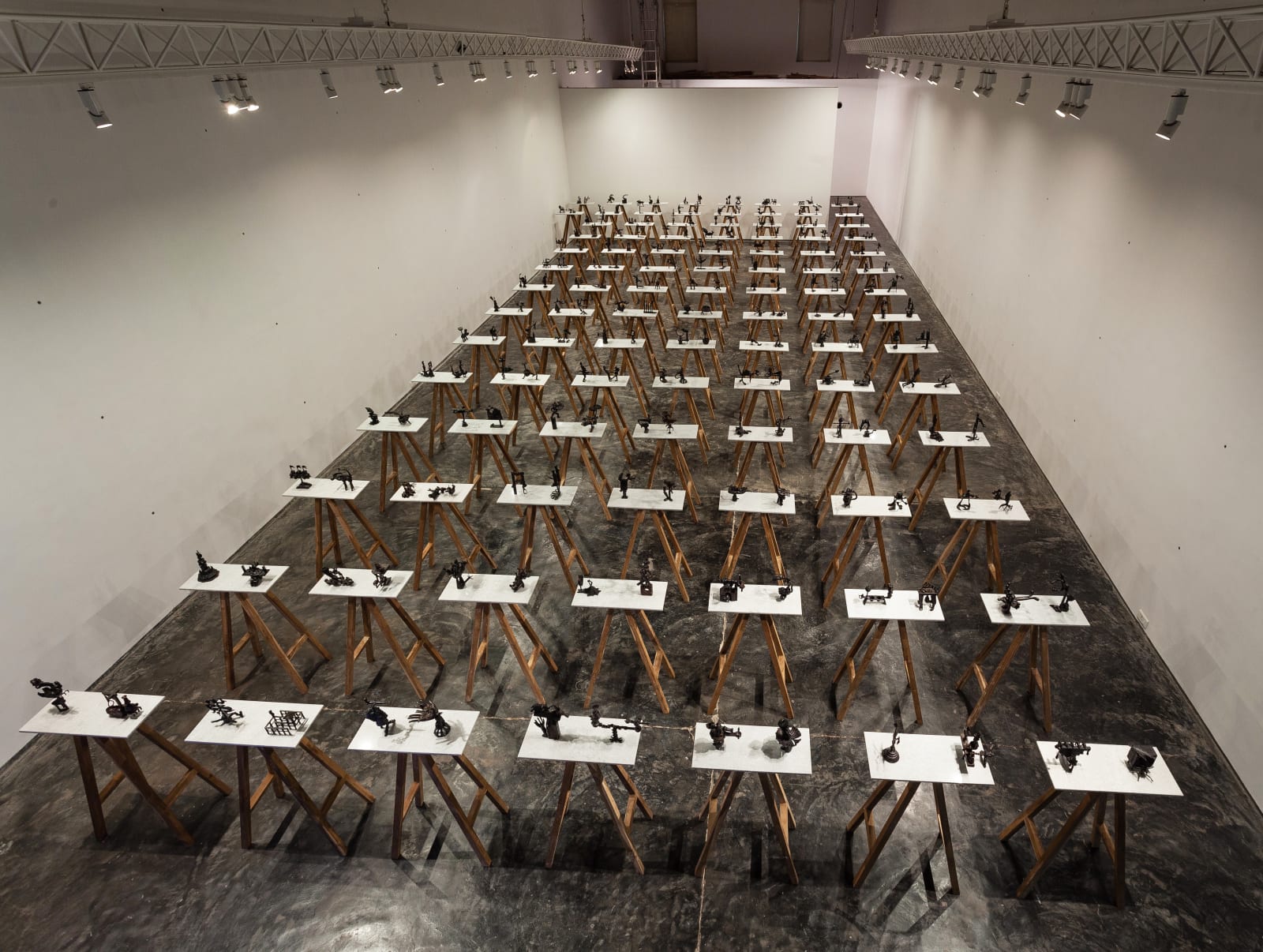Anant Joshi b. 1969
Trembling Hands (of the clock), 2015
Copyright The Artist
Further images
War Games Anant Joshi’s ‘Trembling Hands (of a Clock)’ is a grid of 200 miniature-sized sculptures, arrayed and presented as a hundred related or contending pairs. The artist likes to...
War Games
Anant Joshi’s ‘Trembling Hands (of a Clock)’ is a grid of 200 miniature-sized sculptures, arrayed and presented as a hundred related or contending pairs. The artist likes to think of these sculptures as “hand-held objects”, a definition that can attach itself to pieces in a board game but also to tools or weapons. Joshi’s sculptures bear strong affinities to all three classes of object. Composites in transition between maquette and monument, toy and icon, these sculptures articulate Joshi’s long-standing preoccupation with the board game as a sublimation of the annihilatory performance of war. If the trembling hands of his title suggest the possibility of anxiety and diffidence that might afflict a warrior or player, the clock reminds us that all confrontations, whether matches or battles, are bound by time, which is the shadow of mortality.
Developed with exquisite joinery in sand-cast bronze, Joshi’s sculptures cast minatory shadows. By turns enigmatic and playful, these chimera-like objects are richly detailed and incorporate the forms of can-openers, daggers, blades and rotors, gesturing towards violence as well as transformation. These are haptic as well as morphic provocations: they invite the touch, the grip and the hold, while extending our various individual encyclopedias of strangeness.
Anant Joshi’s ‘Trembling Hands (of a Clock)’ is a grid of 200 miniature-sized sculptures, arrayed and presented as a hundred related or contending pairs. The artist likes to think of these sculptures as “hand-held objects”, a definition that can attach itself to pieces in a board game but also to tools or weapons. Joshi’s sculptures bear strong affinities to all three classes of object. Composites in transition between maquette and monument, toy and icon, these sculptures articulate Joshi’s long-standing preoccupation with the board game as a sublimation of the annihilatory performance of war. If the trembling hands of his title suggest the possibility of anxiety and diffidence that might afflict a warrior or player, the clock reminds us that all confrontations, whether matches or battles, are bound by time, which is the shadow of mortality.
Developed with exquisite joinery in sand-cast bronze, Joshi’s sculptures cast minatory shadows. By turns enigmatic and playful, these chimera-like objects are richly detailed and incorporate the forms of can-openers, daggers, blades and rotors, gesturing towards violence as well as transformation. These are haptic as well as morphic provocations: they invite the touch, the grip and the hold, while extending our various individual encyclopedias of strangeness.







